La Cotte 2019: Excavation report
29 August 2019
Our archaeologists have just returned from 2 weeks excavating at La Cotte, Jersey, one of the most important Middle Palaeolithic sites in Europe! On their first season they had to overcome vertigo and 'ropey' conditions to start stabilising these archaeological deposits.
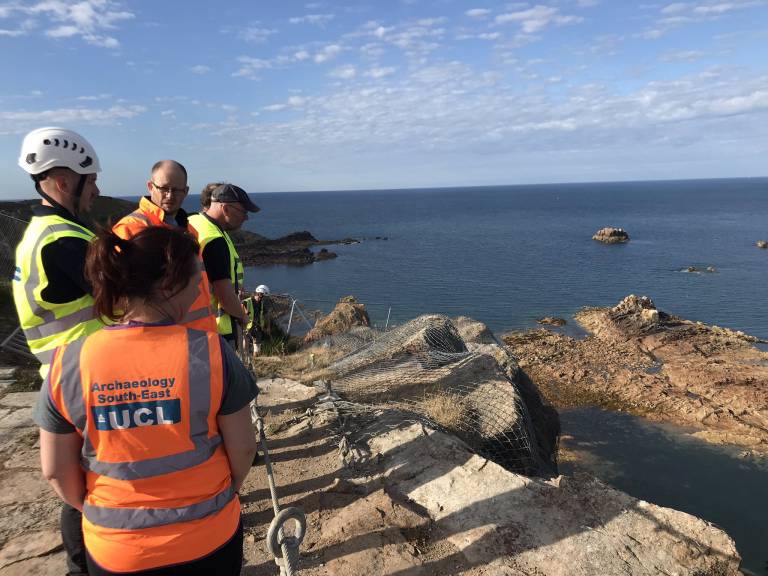
First discovered in 1861, the site of La Cotte de St Brelade has a long history of investigation and has produced hundreds of thousands of Middle Palaeolithic artefacts, faunal remains including heaps of mammoth bones, and hominin remains. It is one of the most important Middle Palaeolithic sites in Europe with a record spanning c. 250k years, right up until some of the very last Neanderthal populations in Europe. While the site has been extensively studied and excavated since its discovery, no research excavation had been undertaken at the site since 1981 and no management of the site had happened since then.
This project is focussing on the part of the site known as The West Ravine, which has a c. 10m build-up of deposits infilling the ravine, deposits spanning many thousands of years and likely holding significant Middle Palaeolithic archaeology (we call this build-up of deposits ‘the bluff’). However, the deposits in the West Ravine were in danger of erosion by the sea, so this program of excavation is part of a larger project to protect and stabilise these deposits.
The site is owned by Societe Jersaise and managed by Jersey Heritage, who brought in engineering specialists Geomarine to erect a large wall protecting the bluff from the sea and to make the site safe to work in by removing loose rocks/boulders from the cliffs and netting the cliffs to prevent anything falling.
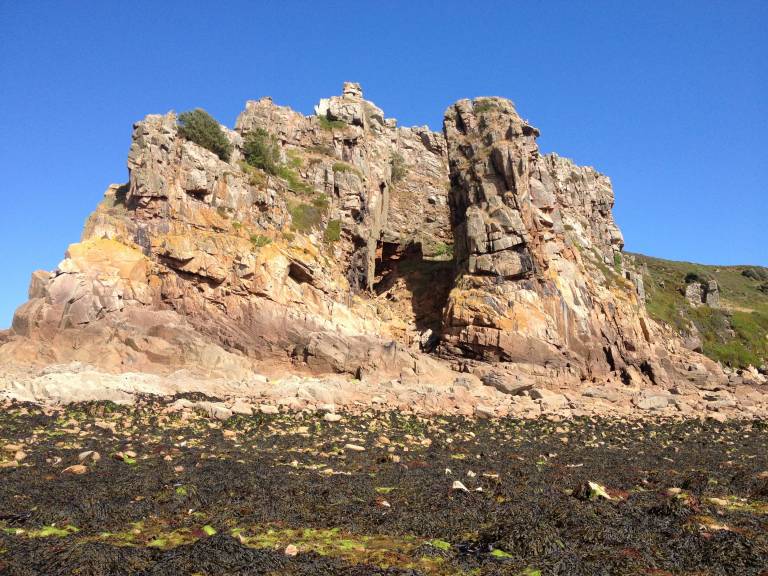
La Cotte from the shore
Archaeology South-East coordinated a specialist team of Palaeolithic archaeologists, geo-archaeologists and surveyors to complete this work by stabilising the bluff itself through controlled archaeological excavation. We plan on doing this by excavating deposits to create a stable and stepped profile as we excavate. It’s an interesting project as our main aim here is really an engineering one – to stabilise the bluff and protect it from erosion. But as we remove the material and excavate down into the bluff we will also be finding some important archaeology and carrying on the previous research that has been done on this site, and we have a team full of specialists to do just that.
We caught up with the team now that they’re back from excavation – featuring contributions from Letty Ingrey, Matt Pope and Ed Blinkhorn!
Site Access: The Abseil of Doom
Getting to site meant a c. 40m abseil down a cliff face! The site is managed by the engineering company Geomarine who oversaw our rope access. We were in full body harnesses with hard hats and on ropes, using state of the art fall arrest and descender devices that we had learned to use back in early July. We would also descend and ascend attached to one of the Geomarine team members. They also attached ladders to the cliff face for us to make it a bit easier. Not your average commute to work!
The Geomarine team were amazing! They took five very scared archaeologists and basically held our hands as we went up and down this steep and high cliff face every day. The first time was pretty terrifying, but we all managed it and nobody cried, so that was a win. By the end of the two weeks we were all reasonably comfortable with the descent and ascent and some of us were even enjoying it!
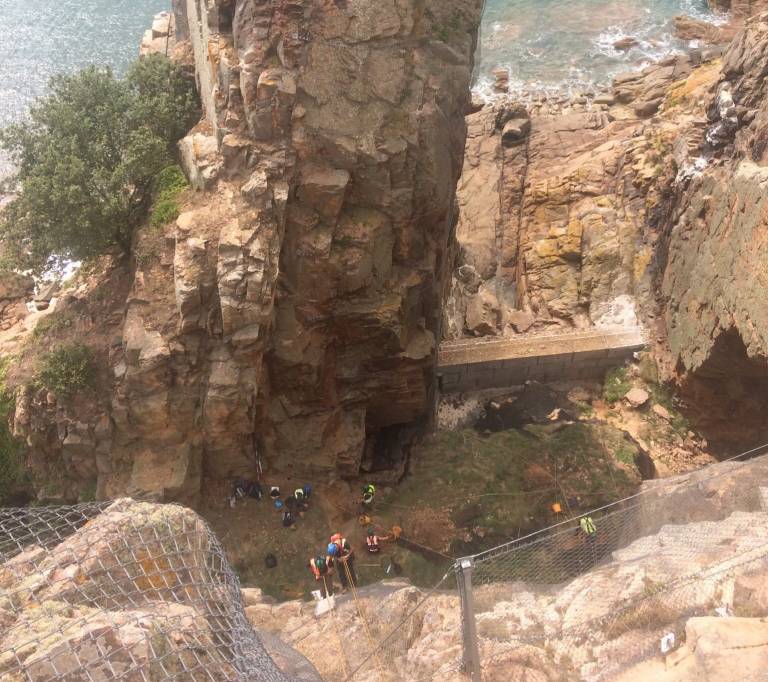
Photo by Geomarine rope access manager Marc Stirrup of archaeologists descending and digging at La Cotte far below
Digging Conditions: a little ropey
The real difference between digging this site and digging other sites was the fact that we had to be in full body harness and attached to a rope at all times. This was for two reasons, firstly there’s a steep edge to the bluff and a fall of many meters, so we didn’t want to fall off. And secondly there is always the remote danger of the bluff itself collapsing, so we needed to be attached to something in case it did. This all made digging a bit more challenging than usual, particularly having to wear a harness at all times which could constrict movement. Also we had to be watchful about the way we moved around each other with our ropes. But overall this wasn’t too challenging.
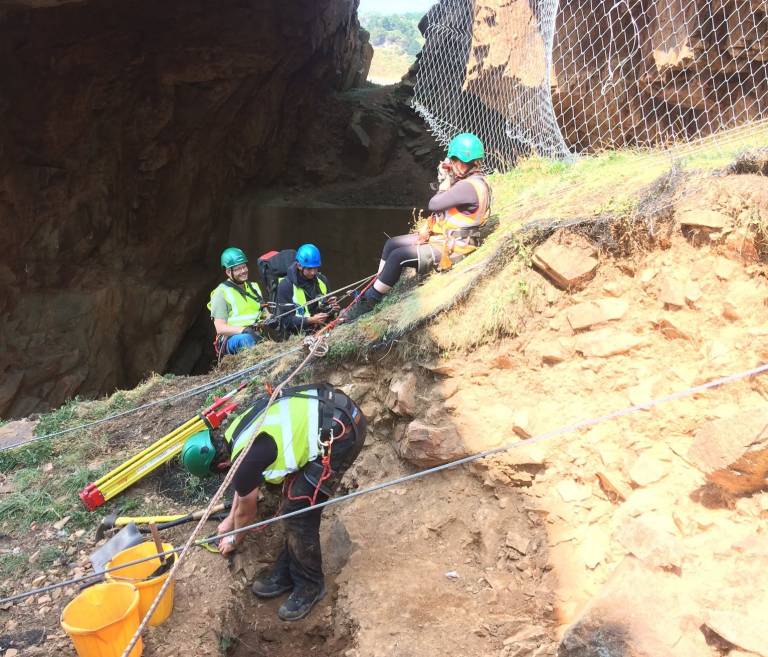
The complexities of the La Cotte dig; excavating, surveying and filming Digging For Britain in a web of ropes, cables and rockfall netting. Photo: Marc Stirrup
Some ingenuity was required on the part of Ed Blinkhorn, who was doing the surveying – the challenge being where to put a total station when you are digging a site on the side of cliff? But with further abseiling/ standing on a big sea defence wall he found a way!
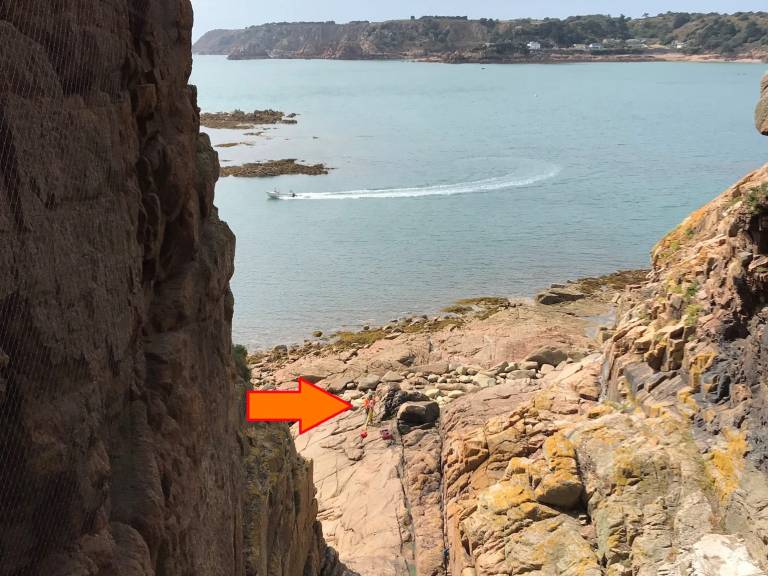
Ed finally finds a place to put his total station!
We didn’t really have much in the way of finds this year. The top of the bluff is covered with a rubble, likely deposited during the last cold stage. No one would have been around at that time (too cold) so we didn’t really expect to find anything in it, however the rubble all needs to be removed before we can get into the finer grained deposits below which have the potential for archaeology. We didn’t really expect to find much this year. The two weeks were more about firstly seeing if we could work the site with all the issues around access, and secondly building a model of the site in order to plan future seasons.
Dr Sarah Duffy and Dr Ed Blinkhorn have worked to survey and produce (amazing!) photogrammetry models of the site. This will let us work our exactly how much sediment we need to remove and plan this project going forward. Check out some preliminary renderings here.
Public outreach
It is really important for us to include and involve and connect with as much of the island as possible, we see this as part of the job and there was a lot of local interest around the excavation. La Cotte is a pretty iconic place on Jersey, even without the archaeology, so people were really interested in what we were doing. The Jersey Evening Post ran a story on us and put us on their front page. Several regional news channels also come to film/interview us. And Digging For Britain also came down one day to film us, so we’ll hopefully be on that as well.
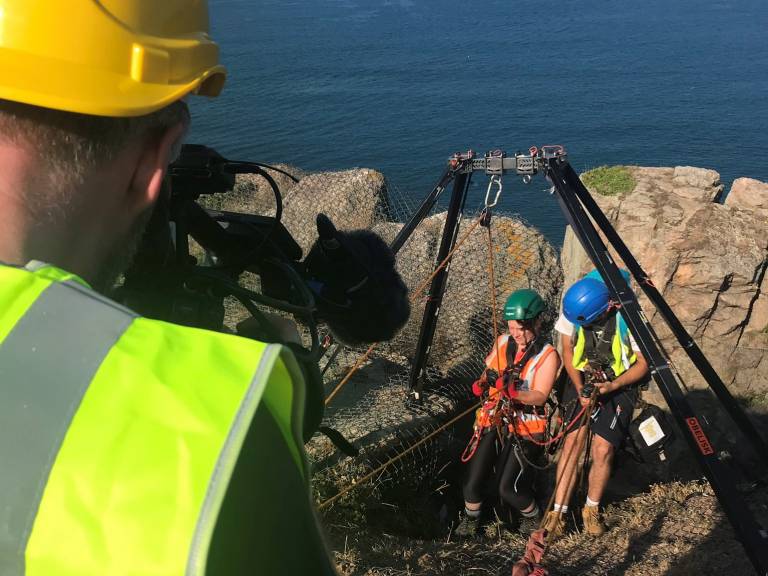
Letty's descent is filmed for Digging for Britain.
We also worked closely with the archaeology section of the Société Jersiaise (the island’s learned society). The Société established a sieving station to process our samples and worked with us to check that the sediment we thought was sterile genuinely didn’t have anything in it. Dr Matt gave tours of the site viewed from the beach to different groups, including The Young Archaeologists. Matt and Sarah also gave a talk one evening about the project in the Jersey Museum.

Lots of interest for the La Cotte low tide tour!
What's next for La Cotte?
We know we can do this now - we can access, dig, and survey the site so this is where the actual work starts to stabilise the bluff! It’s going to take us a few years. Next year we’ll continue to remove the cold stage rubble and hopefully get down to some artefact-bearing horizons!
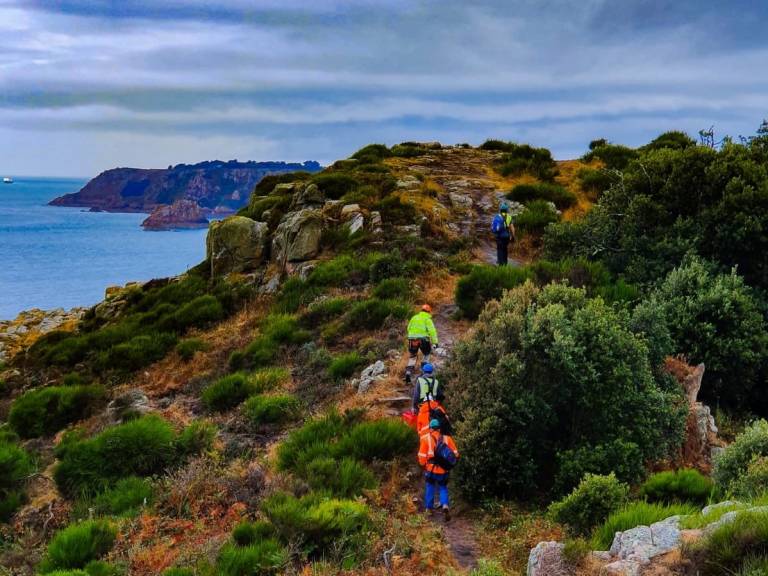
Our intrepid archaeologists on the first part of their morning 'commute'! They'll return next year to this amazing and unique site.
 Close
Close

